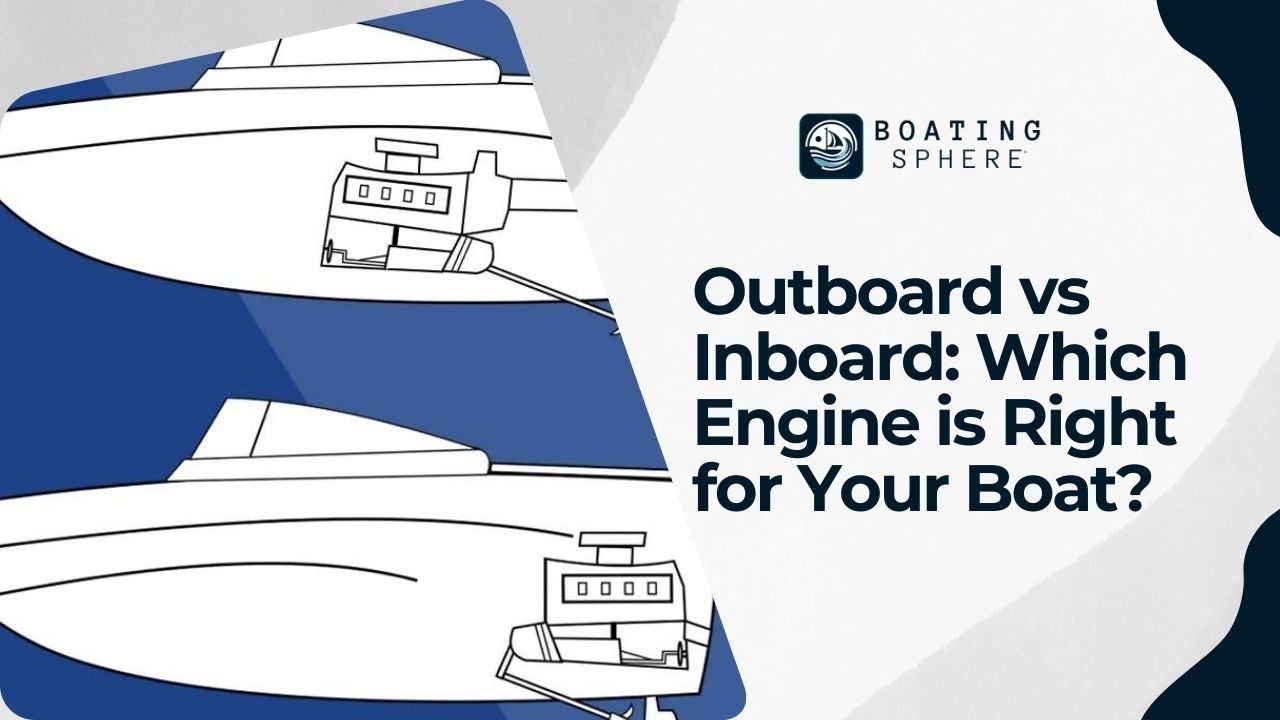Do you need help choosing your boat’s outboard or inboard engine? This decision has long been a topic of debate among boating enthusiasts. Although outboard engines have increasingly dominated the market in recent years, each type has its dedicated supporters. Boat owners are often sincere in defending their preferred choice.
However, the ideal option can sometimes be complicated. Both outboard and inboard engines have their unique advantages and disadvantages. The best choice largely depends on the type of boat you’re considering, where you intend to use it, and your specific boating needs. So, let’s explore the pros and cons of each engine type.
What is an Outboard Motor?
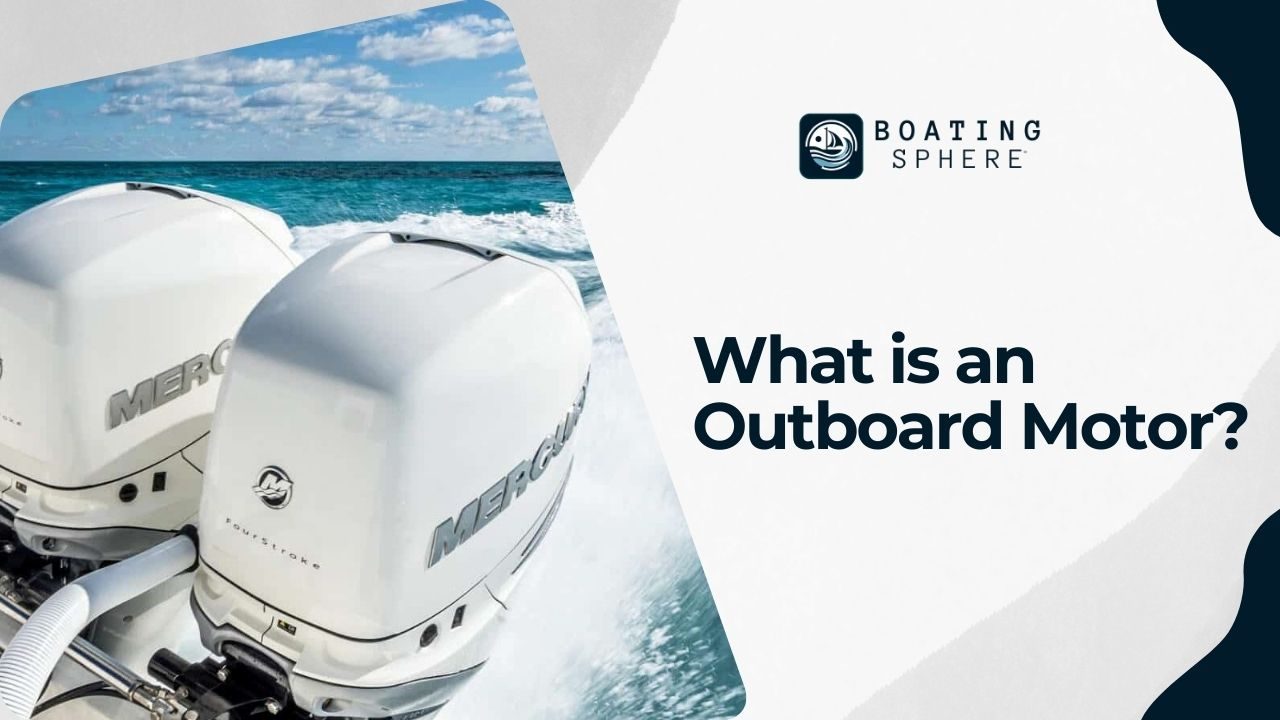
An outboard motor, mounted externally at the boat’s transom, is popular for recreational boats. It comprises three main sections:
- The upper part housing the power head
- The middle features a motor mount affixed to the transom
- The lower section with a gearcase and propeller
Smaller outboards may come with a tiller for steering. At the same time, larger models, typically over 30 or 40 horsepower, are equipped with forward steering controls. A significant advantage of outboard motors is their ability to tilt out of the water, reducing marine growth and corrosion risks. Additionally, they’re easily detachable, simplifying boat repowering tasks.
Most outboard motors run on gasoline, although some diesel and electric options are available. This discussion will primarily focus on gasoline outboards. For more insights, check our guide on the best outboard motor brands.
What is an Inboard Motor?
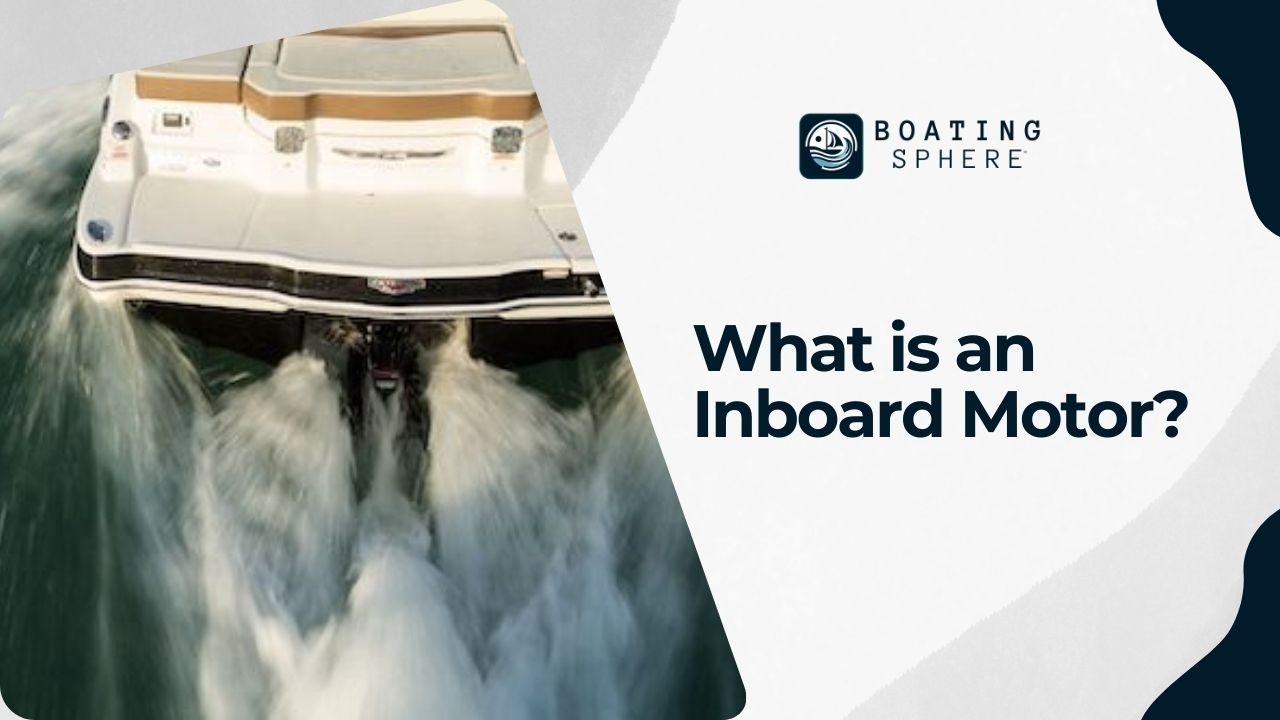
In contrast, an inboard motor is installed inside the boat’s hull. It consists of the engine and running gear. Inboard engines are common in larger boats needing powerful diesel engines, watersports boats, and some runabouts or cruisers. Benefits of inboard motors include:
- A lower center of gravity.
- Enhancing ride quality.
- Higher horsepower capabilities.
- Sometimes, it has better fuel efficiency.
For those with mechanical skills, inboard engines, akin to automotive engines, might be more approachable for maintenance. However, as car engines grow more complex, this advantage is diminishing with newer inboard models.
Different Types of Inboard Engines
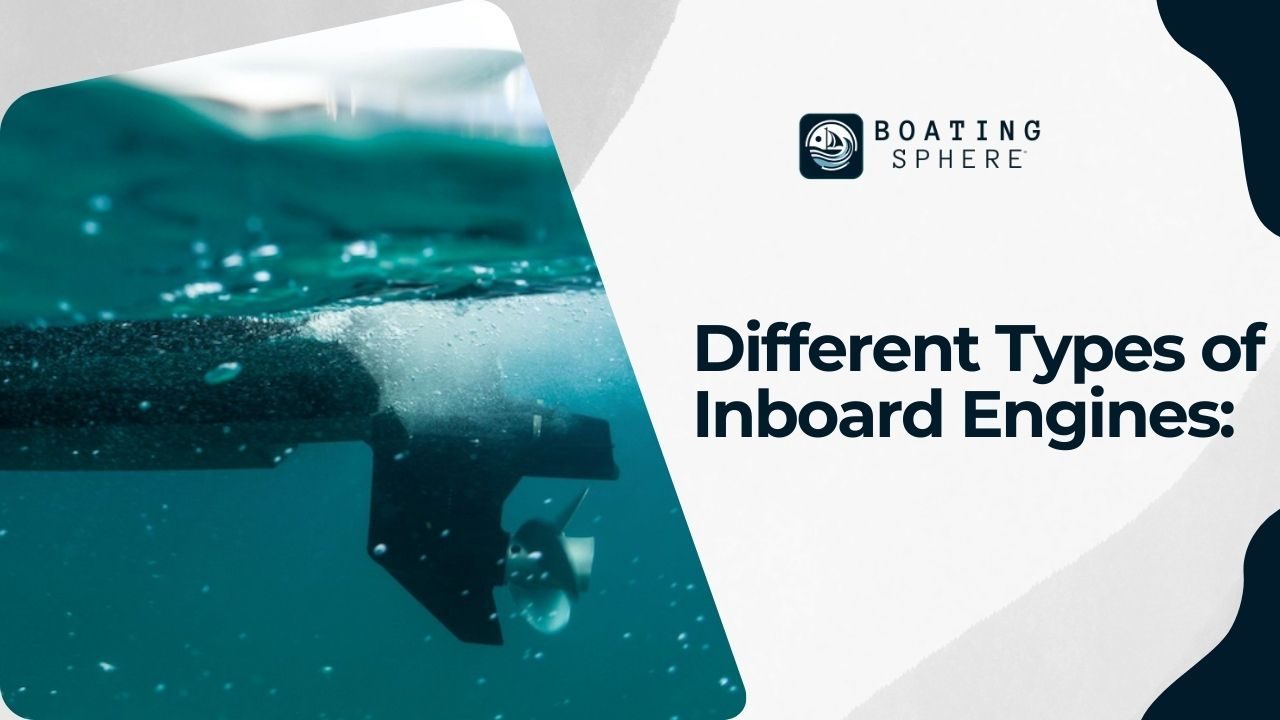
- Straight-shaft Inboard: In this setup, a fixed prop shaft connects to a non-steerable propeller, with steering controlled by a separate rudder. A variation is the V-Drive, where the engine is forward-facing and connected via a V-shaped coupling to an aft-facing prop shaft, allowing engine placement near the transom and more cabin space.
- Stern-drive: Combining features of inboards and outboards, the stern-drive has the engine inside the boat near the transom, but the drive system extends through and out the transom. This configuration is prevalent in runabouts and cruisers, offering steerable thrust for better maneuverability and the ability to adjust drive units up and down, accommodating a large swim platform without an obstructing outboard.
- Jet Drive: These inboard engines use waterjets instead of propellers for propulsion, powering personal watercraft, some runabouts, and a few larger boats.
- Pod Drives: Featuring an inboard engine connected to a steerable “pod” with running gear extending down through the boat’s bottom, pod drives offer enhanced Handling and directed thrust.
Choosing between an outboard and an inboard engine involves considering your boating needs and preferences. Each type offers distinct benefits and potential drawbacks, making the decision personal based on your boating lifestyle.
What are the Differences Between Inboard and Outboard Engines?
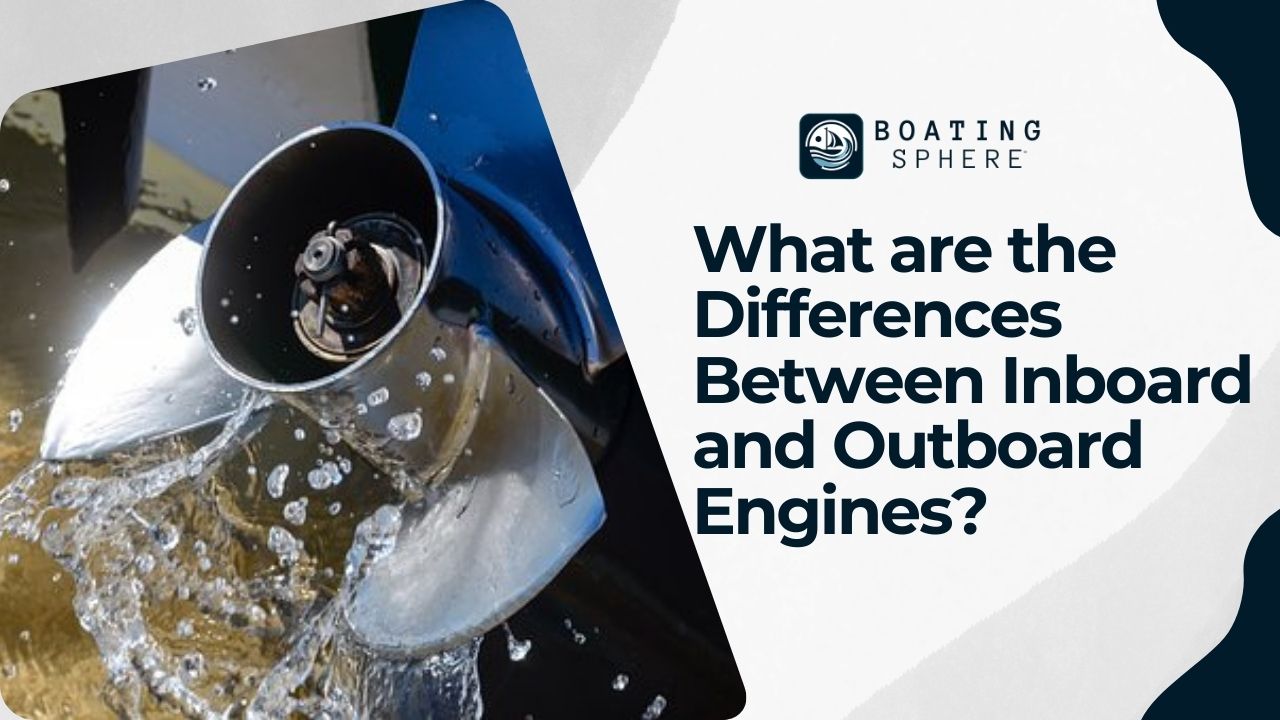
When choosing between inboard and outboard engines, it’s crucial to consider several factors to find the best fit for your specific boating needs. While there is only one universally superior option, the ideal choice depends on your boat type and personal requirements.
Appearance and Fuel Efficiency
The gap in fuel efficiency between modern four-stroke outboards and inboard engines has narrowed significantly. However, diesel inboards may have a slight advantage over gasoline outboards in efficiency. Similarly, gasoline stern drives typically edge out outboards slightly in this aspect.
Fuel Efficiency Considerations
Currently, the difference in fuel efficiency between inboard and outboard engines is minimal. That said, the efficiency can vary depending on your boat’s weight. Heavier boats using outboard engines may experience reduced fuel efficiency, while inboards, offering more power, could be more economical in fuel use. Generally, inboard engines are perceived as more fuel-efficient.
Performance and Handling
In terms of performance, outboards often lead, especially when horsepower is matched, and they usually offer better handling in single-engine setups. However, twin inboards may surpass twin outboards in dockside maneuverability. Pod drives provide superior close-quarters handling. Inboard engines, positioned lower in the boat, can enhance stability and smoothness in running.
Maintenance and Replacement
Maintenance plays a crucial role in the inboard vs outboard decision, particularly for saltwater vessels. Outboards, easily accessible and removable, are advantageous for maintenance and winter storage, as they can be lifted out of the water, reducing corrosion risks.
Inboard engines, fixed within the hull, are more challenging to access and prone to corrosion. However, outboards, exposed to the elements, demand regular maintenance. Replacing an outboard engine is simpler, involving unbolting from the boat. In contrast, inboard engine replacement is more complex, requiring the ship to be lifted from the water.
Safety Factors
Safety-wise, both inboard and outboard engines are typically on par, adhering to USCG and often National Marine Manufacturer Association or CE standards. Notably, diesel inboards are safer than gasoline outboards due to the lower volatility of diesel fuel.
Reliability Aspects
Historically, inboards were more reliable, but today’s four-stroke outboards are technologically advanced and equally dependable. Diesel engines still have a slight reliability edge over gasoline engines. However, stern drives face additional reliability challenges due to their intricate drive units and couplings, which can introduce more potential failure points and sometimes cause issues.
Cost Comparison
Historically, inboard engines were more cost-effective, but technological advancements have shifted this balance. The outboard variant is often slightly less expensive for recreational boats available in both configurations. While prices vary across different manufacturers and models, outboard ships are typically more affordable when comparing equivalent models. However, depending on the brand and type, you can still find inboard boats that are less costly than their outboard counterparts.
Impact on Boating Experience
The engine type significantly influences the overall boating experience. Modern outboards have become much quieter, rivaling inboards in noise levels, although some jet drives remain notably louder. Outboards can be lifted in shallow waters, making them ideal for coastal areas, lakes, mangroves, or rivers. On the other hand, inboard boats often feature full-beam swim platforms, offering more space than what’s available on outboard boats. However, inboard engines require dedicated interior space, potentially reducing cabin or storage area.
Pros and Cons of Outboard and Inboard Engines
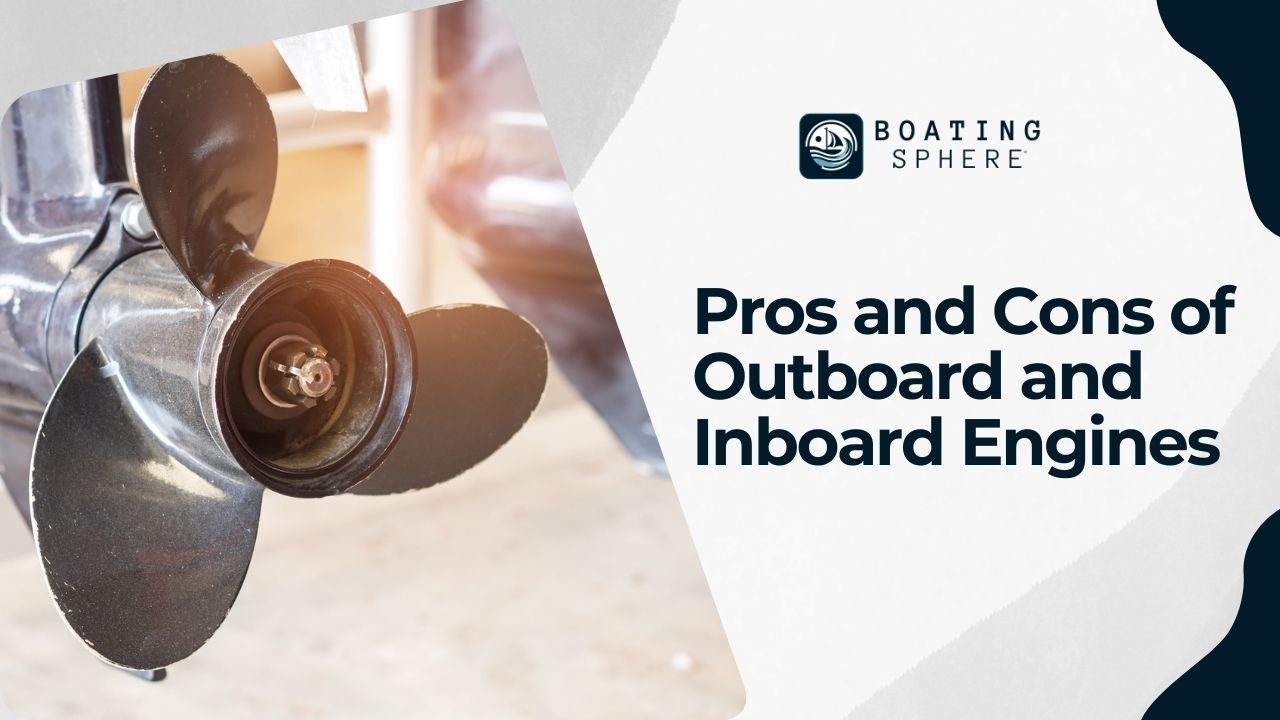
Let’s examine the pros and cons of inboard and outboard engines.
Pros of outboard engines
- Higher power-to-weight ratio.
- Easier and less costly maintenance.
- Ability to rise out of the water, requiring less draft.
- Superior Handling due to directed thrust.
- Generally faster performance.
Cons of outboard engines
- Potentially less fuel-efficient.
- Limited swim platform size.
- Always visible, impacting aesthetics.
Pros of inboard engines
- Full-beam swim platform compatibility.
- Integrated design can be more visually appealing.
- Lower center of gravity, enhancing stability.
- In some cases, more fuel-efficient.
Cons of inboard engines
- Occupies more internal boat space.
- Higher maintenance complexity and cost.
- Requires deeper draft, affecting maneuverability.
- Can reduce available cabin and storage space.
Which boats have inboard engines?
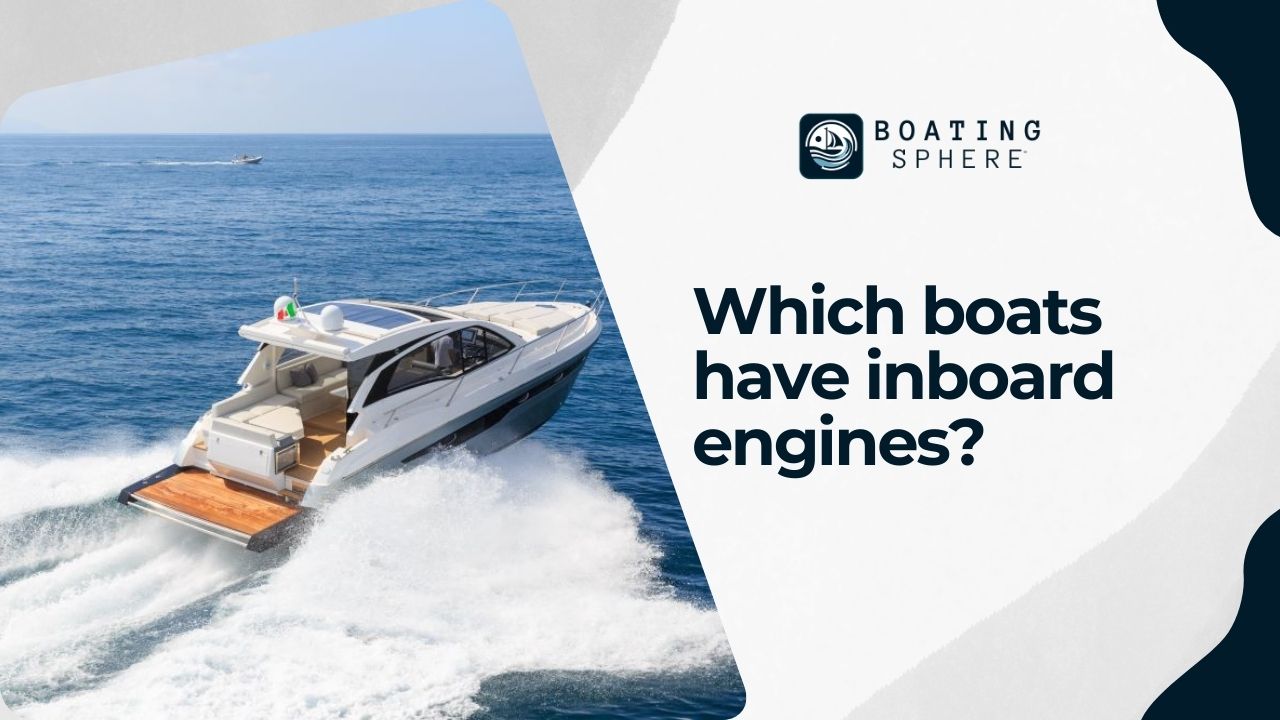
Inboard engines are commonly found on larger boats, ski boats, wake boats, bowriders, and medium to large cruisers with stern-drive inboards. While inboard engines can be fitted in almost any ship, they are less common in small RIBs, pontoon boats, and fishing boats.
Which boats have outboard engines?
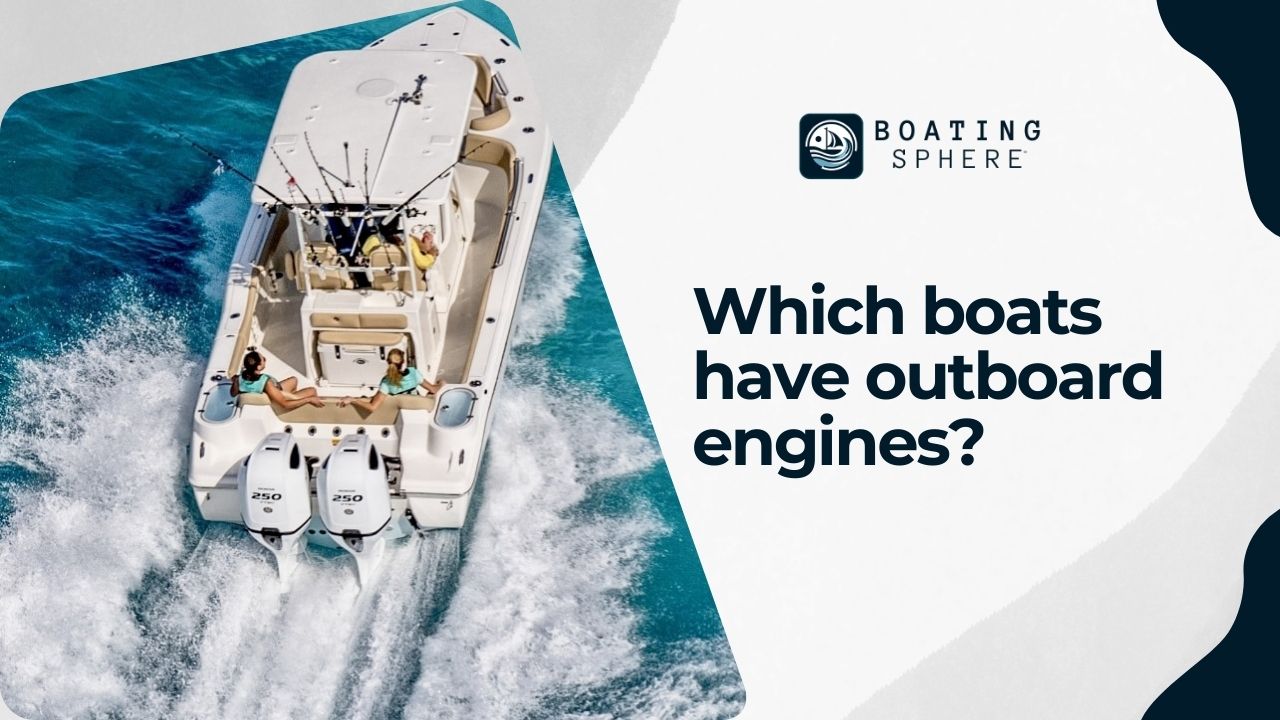
Outboard engines are frequently used in smaller boats like small RIBs, Jon boats, pontoon boats, and bass boats, where the power-to-weight ratio is optimal. Previously rare in boats over 30 feet, outboard engines have grown popular in boats up to 40 feet and beyond, thanks to technological improvements. Large center consoles, fishing boats, and RIBs sometimes feature up to four or five outboards to achieve the needed power and speed.
Popular Inboard and Outboard Engines Brands
Inboard and outboard engines, distinct in their positioning and design, are typically produced by manufacturers specializing in one type or the other. Leading names in outboard engine production include Honda, Tohatsu, Suzuki, Mercury, and Yamaha. For inboard engines, prominent brands are Mercury Mercruiser, Ilmor, Volvo, Scania, Indmar, and PCM.
The decision between an inboard and an outboard engine has no one-size-fits-all answer. It heavily depends on various factors like the size and design of your boat, your intended use, where you plan to store it, and the specific conditions in which you’ll be operating. Your personal requirements and preferences will be crucial in determining the most suitable engine type for your boating needs.
Was this page helpful?

